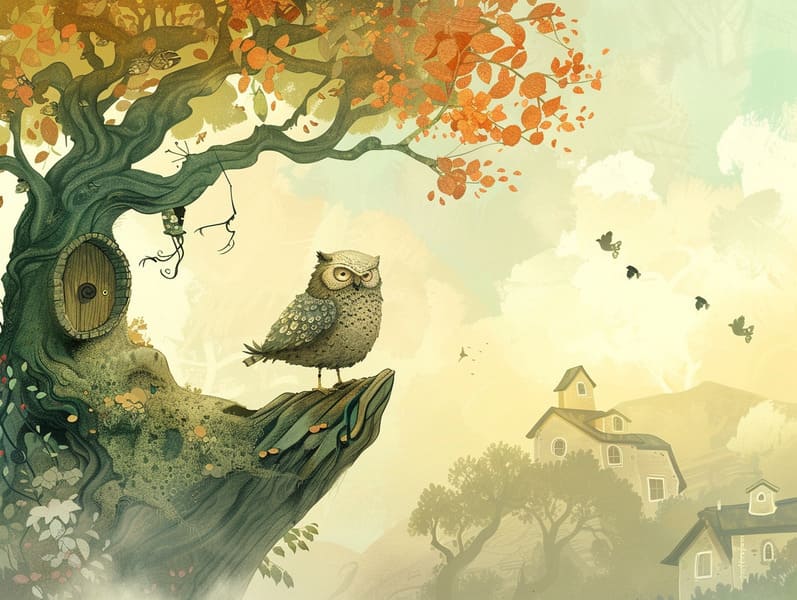The Beginning of Famous Fairy Tales and the Ageless Majesty.
The Beginning of Famous Fairy Tales and the Ageless Majesty.
Blog Article

Best fairy tales have historical significance. These tales have been conveyed from one generation to the next centuries before they were ever recorded. They developed from a variety of cultures, including Indigenous traditions. They were initially transmitted among adults, often carrying themes and messages relevant to the societal norms and beliefs of the time.
The Brothers Grimm, Jacob and Wilhelm, were among the first to gather and publish many of these beloved fairy tales. Their anthology, "Grimm's Fables," included narratives like "Cinder Maid," "The Story of Hansel and Gretel," and "Snow White," which have since become essentials in the world of beloved fairy tales. Similarly, the Danish author's magical stories, such as "The Little Mermaid," and "The Story of the Ugly Duckling," have enchanted hearts worldwide, cementing their place in the pantheon of beloved fairy tales.
Despite being ancient, fairy tales remain as significant as ever, especially as nighttime stories for kids. These enchanting tales are now available in various formats, including artistically illustrated books, charming animations, and online fairy tales.
Their continued relevance can be attributed to several magical reasons:
Vital Lessons: Timeless fairy tales often whisper important moral lessons. Tales like "The Tale of the Boy Who Cried Wolf" teach the virtue of honesty, while "The Tale of the Tortoise and the Hare" exemplify the benefits of persistence and modesty. These tales offer children clear distinctions between correct and incorrect, helping to shape their moral compass in a kind yet impactful way.
Kindness and Comprehension: Fairy tales frequently involve characters facing challenges and struggles, inspiring readers to empathize with their struggles and back their triumphs. For instance, "Beauty's Beast" reveals the importance of seeing beyond the surface to appreciate the real person of a person, fostering insight and awareness.
Cultural Understanding: Many fairy tales are interwoven with the cultural contexts from which they grew. Exploring these stories can provide informative snapshots into different historical contexts, building a sense of world appreciation and respect.
Inventiveness and Imagination: The enchanted elements in traditional fairy tales—enchanted objects—engender children’s imaginations. These stories transport readers to supernatural realms, kindling fantasy ideas and a sense of magic that continues a lifetime.
Timeless fairy tales are not only bewitching but also informative. They function as fantastical tools in promoting various brain and heart skills in the young. When traditional fairy tales are recited, they develop verbal development by bringing new language and elaborate sentence structures. This practice also nurtures hearing perception and mental focus, as young ones concentrate deeply, anticipating to see what happens next.
Furthermore, discussing the themes and characters of old fairy tales can promote problem-solving abilities and thought processes. The young are led to spot patterns, predict happenings, and understand cause and effect. These analyses also promote kids verbalize their thoughts and feelings, nurturing their emotional intelligence.
In today’s technological age, the prevalence of online fairy tales has made these fairy tales more reachable than ever. Digital sites and online apps present large libraries of ancient fairy tales that can be accessed or listened via anytime, anywhere. Fairy tales spoken are particularly sought after, extending an interactive method for kids to immerse in these whimsical stories. Audio stories and narrated videos bring characters and settings to life, often supplemented by whimsical soundtracks and tunes that heighten the narrative adventure.
The unfading fascination of classic fairy tales lies in their ability to modify to changing times while maintaining their key morals. Contemporary revisions of these tales often feature more inclusive figures and modern settings, making them pertinent to today’s audience. However, the essential messages of spirit, kindheartedness, and truth remain unchanged, continuing to strike a chord with young readers of all ages.
Traditional fairy tales also offer a sense of protection and familiarity. They put out a systematic narrative with a obvious beginning, middle, and end, often wrapping up with the culmination of conflicts and the triumph of righteousness over wickedness. This certainty can be placating for the young, affording a sense of solidity in an inconstant world.
Classic fairy tales continue to bewitch and guide new generations, maintaining their splendor and relevance in modern society. As bedtime stories for kids, they share a perfect blend of charm and understanding, enhancing moral values, empathy, and creativity. The check here prevalence of online storybooks and the well-received status of fairy tales voiced promise that these ancient stories remain accessible to new generations.
By conserving and sharing these narratives, we continue to cherish the rich tapestry of storytelling and cultural heritage. Whether you are perusing a vibrantly illustrated book, viewing a internet library, or playing an voice book, the grace of classic fairy tales is always within reach. These stories teach us of the timeless force of stories and its ability to tie us across generations and cultures.
Be it you are browsing a gorgeously illustrated book, enjoying a online collection, or playing an narrated book, the mystique of children's fairy tales is always within reach.
These narratives demonstrate of the continued impact of narratives and its ability to bring us together across eras and regions, weaving a spell that charms and informs alike.